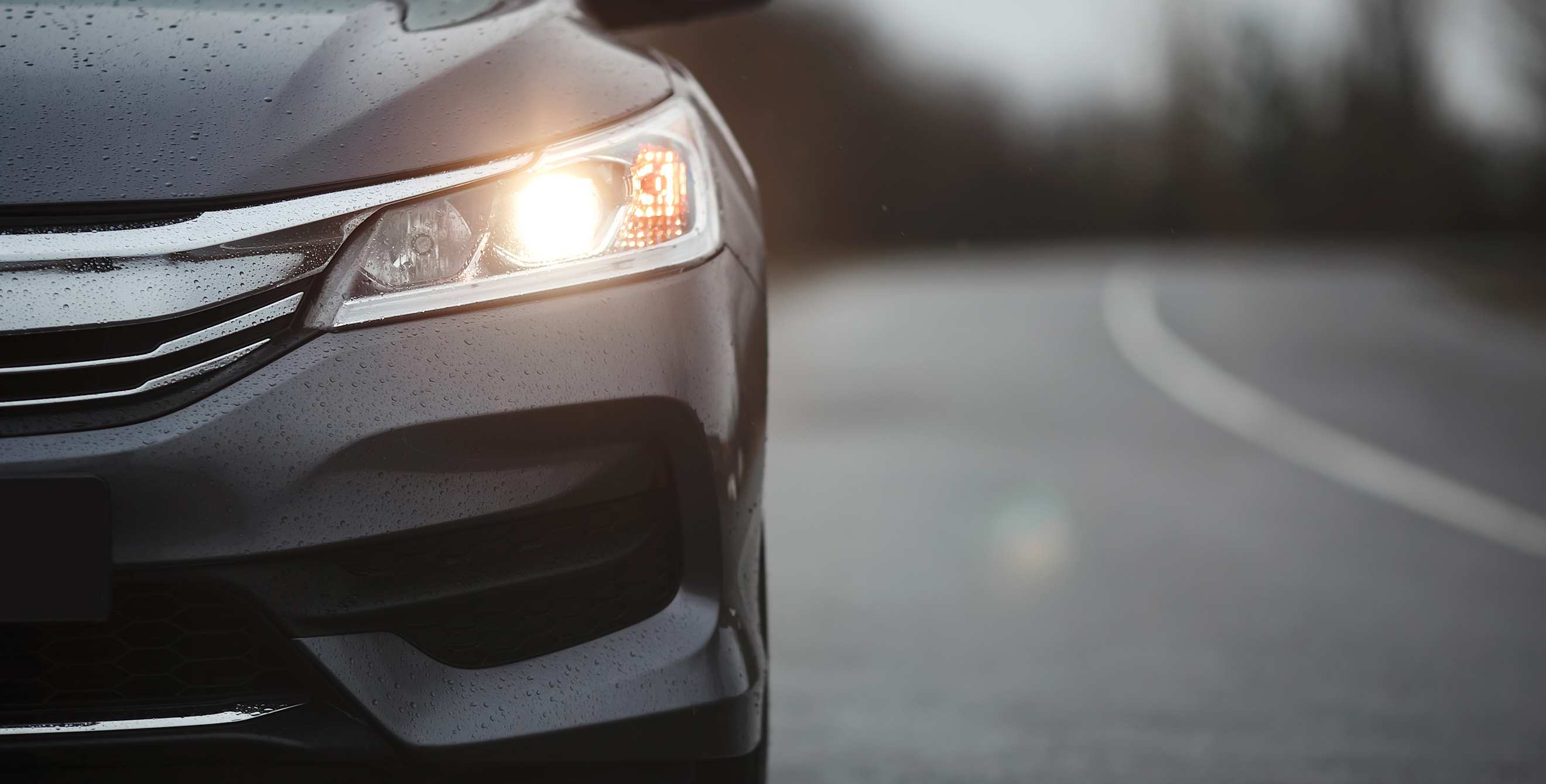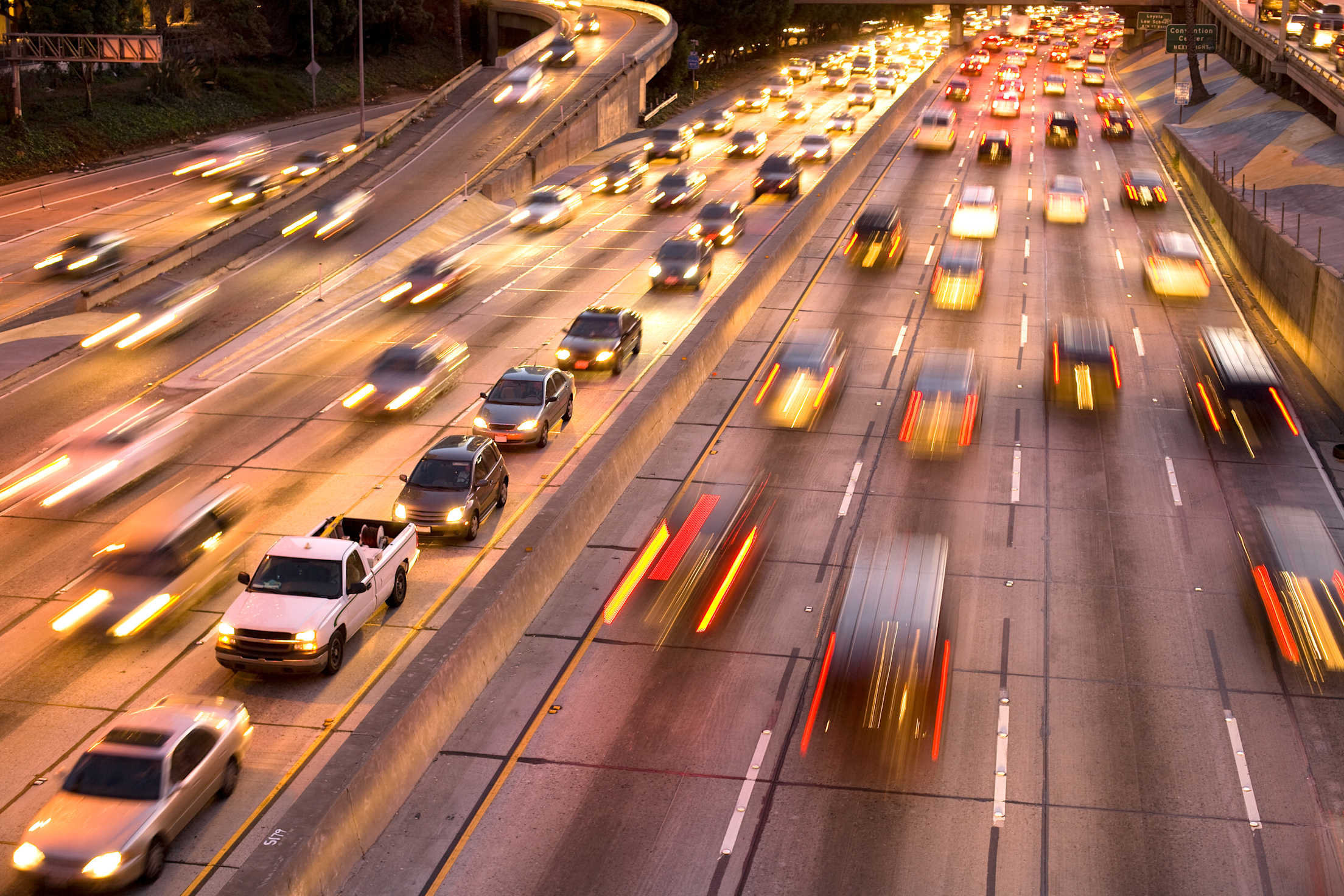
When to Use High Beam vs. Low Beam Headlights
Increase your driving visibility and safety with these tips.

Driving at night can reduce your visibility and put you at a higher risk of having an accident. One-quarter of driving happens at night, yet it leads to about half of all traffic fatalities, according to the U.S. Department of Transportation Federal Highway Administration. A key part of staying safe on the road while driving at night, or in situations with limited visibility, is using the appropriate headlights. Learn when you should use high beams versus low beams and specific headlight laws by state.
When to Use High Beam Headlights
High beams should be used when your visibility is severely compromised. But they should be used carefully and only in certain circumstances.
“The most common reason you would want to use your high beams is when you have poor visibility at night. Your high beams make [seeing] significantly easier in general as well as increase the reflections of road signs, such as stop signs or yield signs,” says Brad Foster of DIY Auto Restorations. “High beams can also come in handy when you're in areas that have little to no light exposure. Roads that have trees overlapping them are significantly harder to see down during the night or at dusk.”
The best times to use high beams are when you’re driving on:
- rural roads or highways, where it’s extremely dark;
- city roads or highways with poor lighting and visibility.
However, it should be noted that high beam use may be illegal in certain instances and may vary by state. Generally, you’re required to dim your high beams if there are oncoming drivers or if you’re following another car closely. Why? Because high beams are so powerful they could temporarily blind another driver, obscuring their vision and creating a hazardous situation.
In essence, high beams should only be used in situations where visibility is an issue. For example, driving on a rural road that has few streetlights or on a stretch of highway at night with no lighting.
Though it may seem counterintuitive, you should not use high beams in extreme weather conditions. These include:
- Fog
- Rain
- Snow
- Smoke
This strategy can backfire as the high beams mixed with these conditions will reflect back and cause glare, making it more difficult to see.

When to Use Low Beam Headlights
It’s much more common to use your low beams, which can be used in a variety of situations.
“Low beams should be your go-to pretty much 24/7," says Foster, "however, your high beams can be used to see better at night, and in urban or rural areas. Your low beams should be utilized during hazardous weather, when passing by other vehicles, or following someone.”
Unless high beams are required for proper visibility, drivers should always keep their low beams on when driving to make it easier for other road users to see them, even in daylight, according to William E. Van Tassel, manager of AAA Driver Training Programs. Low beams are also the best choice in the following situations:
- at night on busy roads
- in the rain
- in the fog
- in the snow
- in smoke or haze
In many cases, your low beam headlights are the default choice and high beams can be used in special circumstances noted above.
Headlight Laws by State
When it comes to using high beams or low beams, each state has specific laws.
Alaska
- Use high beams only when there is no oncoming vehicle within 500 ft.
- When drivers approach, change high beams to low beams.
- Use low beams if following a car within 300 ft.
- Use low beams if you can’t see further than 1,000 ft.
- Use low beams if there’s fog, rain, snow, smoke, or dust.
Arizona
- Use low beams on city and town streets and if there’s rain, dust, glare, and other weather conditions affecting visibility.
- Use low beams if following a car within 200 ft.
- Use high beams on highways only when there is no oncoming vehicle within 500 ft.
- When drivers approach, change high beams to low beams.
California
- Use low beams if following a car within 300 ft.
- Use high beams only when there is no oncoming vehicle within 500 ft.
- When drivers approach, change high beams to low beams.
- Use low beams if using windshield wipers due to rain, fog, or snow.
- Use low beams 30 minutes after sunset until 30 minutes before sunrise.
- Use low beams if you can’t see further than 1,000 ft.
- Use low beams if dust, clouds, smoke, or fog affects visibility.
- Use low beams on mountain roads and tunnels.
- Turn on low beams when signs mandate usage.
Montana
- Use high beams only when there is no oncoming vehicle within 500 ft.
- Turn off high beams when 500 ft. behind vehicles.
- Use low beams if there’s dust on gravel roads.
- High beams must be dimmed when meeting vehicle at 1,000 ft. or overtaking them at 500 ft.
Nevada
- Use high beams on country roads at night.
- Use high beams only when there is no oncoming vehicle within 500 ft.
- When drivers approach, change high beams to low beams.
- Use low beams if following a car within 300 ft.
- Use low beams if there’s fog, rain, or snow.
- Use low beams 30 minutes after sunset until 30 minutes before sunrise.
- Use low beams if you can’t see further than 1,000 ft.
- Use low beams when lighting is insufficient.
- Turn on low beams when directed.
Utah
- Use high beams only when there is no oncoming vehicle within 500 ft.
- Use low beams if following a car within 300 ft.
- Use low beams in fog, rain, or snow.
- Use low beams 30 minutes after sunset until 30 minutes before sunrise.
Wyoming
- Use high beams on rural roads and highways.
- Use high beams only when there is no oncoming vehicle within 500 ft.
- When drivers approach, change high beams to low beams.
- Use low beams if following a car within 300 ft.
- Use low beams in fog and rain.
- Use low beams 30 minutes after sunset until 30 minutes before sunrise.
- Use low beams if you can’t see further than 1,000 ft.
- Turn on low beams as light begins to dim.